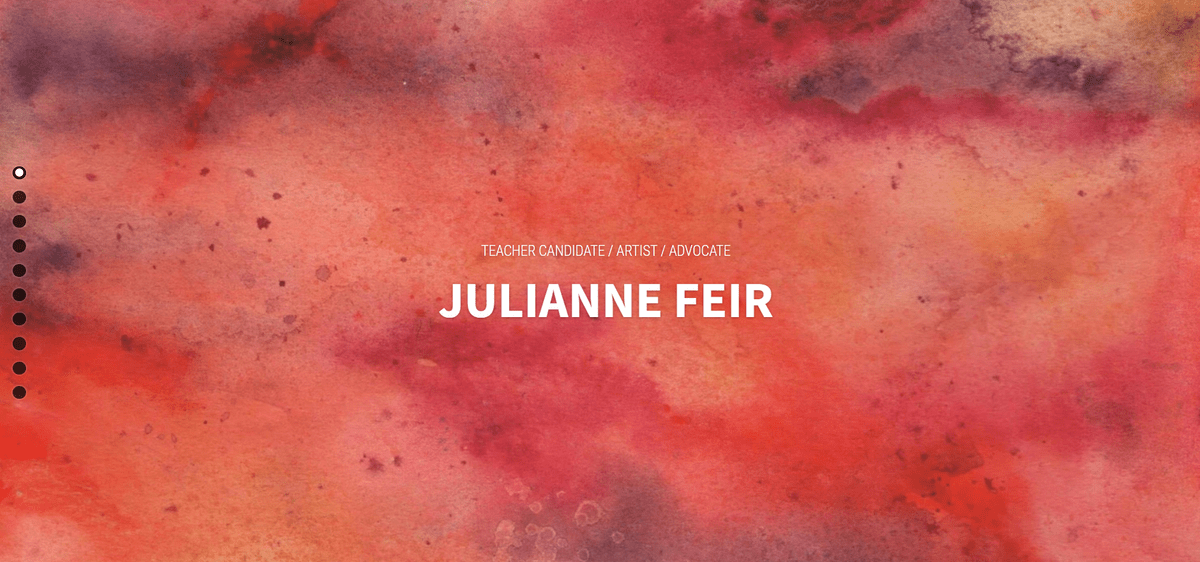From Rainbow To Revenue: Brand Colors And Their Magical Marketing Powers
From Rainbow To Revenue: Brand Colors And Their Magical Marketing Powers

In the competitive business world, brand colors are crucial in shaping a company's identity and influencing consumer behavior. The strategic selection of branding colors can make or break a brand's success, making it essential for businesses to understand the impact and trends associated with their primary colors.
Importance of Brand Colors
The importance of brand colors cannot be overstated. They serve as the visual representation of a company and are often the first thing consumers notice about a brand. Branding colors create instant recognition and evoke emotions, making them an integral part of any successful marketing strategy.
Brand colors are also crucial for maintaining consistency across all marketing materials, from websites to social media posts and print advertisements. By consistently using the same colors, a brand can build a solid and memorable visual identity that sets it apart from competitors. In addition, brand colors can also influence purchasing decisions, as consumers often associate certain emotions and qualities with specific colors, making it essential for brands to choose their colors wisely.
Psychological Impact of Branding Colors
The psychological impact of branding colors is profound, as different hues can elicit specific emotional responses from consumers. For example, warm tones like red and orange are often associated with energy and excitement, while cooler tones like blue and green convey calmness and trustworthiness.
It's no wonder that companies put so much thought into the colors they use for their branding. After all, who wouldn't want their customers to feel energized and excited when they see their products? And on the flip side, who wouldn't want to convey a sense of calmness and trustworthiness? It shows that there's more to branding than meets the eye - or, to say, completes the color wheel!
Branding Color Trends
Branding color trends constantly evolve, influenced by cultural shifts, technological advancements, and consumer preferences. Staying updated on current color trends is essential for businesses to maintain a modern and relevant brand image while staying true to their primary colors.
Businesses must understand that color trends can significantly impact consumer perception and purchasing decisions. By incorporating current color trends into their branding, companies can show that they are in tune with the times and appeal to a broader audience. However, it's also essential for businesses to stay true to their primary brand colors, as these make them recognizable and memorable in the long run. Balancing current trends with timeless branding is the key to creating a solid and lasting brand image.
Now that we've established the significance of brand colors in the business landscape, let's delve deeper into understanding how these primary colors can shape your brand identity and consumer perception.
Understanding Branding Colors
Image taken from OOO Graphic Design
When it comes to creating a memorable brand, the use of brand colors is crucial. Branding colors are the specific hues and shades representing a company's identity and values. These colors are carefully chosen to evoke certain emotions and perceptions in consumers' minds, making them an essential element of any brand's visual identity.
What are Brand Colors?
Brand colors encompass the specific hues, tones, and shades a company uses to represent its brand. These colors are typically showcased in a brand's logo, marketing materials, website design, and product packaging. They significantly shape consumers' perceptions of a brand and can influence their purchasing decisions.
Choosing the right brand colors is crucial for creating a solid and memorable brand identity. Whether it's the bold red of Coca-Cola or the calming blue of Facebook, these colors become synonymous with the brand itself. They can evoke specific emotions and associations in consumers' minds. Next time you decide on a color scheme for your brand, remember that it's not just about what looks good - it's about how those colors will make your audience feel.
Importance of Consistency in Brand Colors
Consistency in using brand colors across all platforms is paramount for building brand recognition and trust. When customers consistently see the same branding color scheme associated with a particular company, it reinforces their memory of the brand and helps establish a solid visual identity.
Consistency in brand colors also helps to differentiate a company from its competitors. When a brand's color scheme stands out and remains consistent, it makes it easier for customers to recognize and distinguish the brand from others in the same industry. This can be especially important in crowded markets where competition is fierce, as a strong visual identity can help a company stand out and be memorable to consumers.
Establishing Brand Identity through Main Colors
The primary colors chosen for branding play a pivotal role in establishing the overall identity of a business. Whether bold or subtly sophisticated, these primary colors should reflect the brand's essence and resonate with its target audience. The right combination of primary colors can help differentiate a brand from its competitors and leave a lasting impression on consumers.
Choosing the right primary colors for branding is like choosing the perfect outfit for a first date - it needs to make a statement and leave a lasting impression. The primary colors should be carefully selected to evoke consumers' desired emotions and perceptions, ultimately influencing their decision-making process. In a world where first impressions are everything, the primary colors of a brand can make or break its success in the market.
By understanding the significance of branding colors and how they shape consumer perceptions, businesses can strategically utilize them to create powerful visual identities that leave an indelible mark on their target audience's minds.
Choosing Your Brand Colors
Image taken from Oriana Castro
When choosing your brand colors, thoroughly researching your competitors' branding colors is crucial. By understanding the color palettes used by other businesses in your industry, you can ensure that your brand stands out and avoids blending in with the crowd. Analyzing their primary colors and identifying any strikingly effective branding colors can provide valuable insights for your color selection.
A consideration for your target audience is also essential in choosing brand colors. Understanding your potential customers' demographics, preferences, and cultural associations can guide you in selecting the primary colors that resonate with them. By aligning your branding colors with the tastes and values of your target audience, you can establish a deeper connection and create a more memorable brand identity.
Utilizing color theory in branding is another critical aspect of choosing brand colors. By understanding the psychological impact of different hues, tones, and shades, you can strategically select branding colors that evoke consumers' desired emotions and perceptions. Whether using warm tones to create a sense of comfort or cool tones to convey professionalism, leveraging color theory can significantly enhance the effectiveness of your brand colors.
1. Researching Competitors' Brand Colors
To effectively research competitors' branding colors, examine their logos, marketing materials, and online presence. Take note of their primary colors and their use across various platforms. Look for patterns or trends in their color choices and identify any unique or strikingly effective brand colors that set them apart.
After gathering information on competitors' branding colors, it's crucial to analyze how the target audience perceives these colors. Consider conducting surveys or focus groups to gauge people's associations and emotions with each color. This will give you valuable insights into the potential impact of using similar or contrasting colors in your branding strategy. Color psychology plays a significant role in shaping consumer perceptions, so consider the power of choosing the right brand colors.
2. Consideration of Target Audience
Consideration for your target audience involves understanding their preferences, cultural backgrounds, and emotional responses to different colors. Conduct surveys or gather feedback to understand which primary colors resonate most with them. By aligning your brand colors with the tastes and values of your target audience, you can create a more compelling brand identity that fosters stronger connections.
Understanding the psychology of color can also play a significant role in shaping your brand's image. For example, warm colors like red and orange can evoke excitement and energy, while cooler tones like blue and green may convey a sense of calm and trust. By strategically incorporating these color associations into your branding, you can elicit specific emotional responses from your audience and leave a lasting impression. Remember, the colors you choose are not just for aesthetics but also for communicating the personality and values of your brand.
3. Utilizing Color Theory in Branding
Color theory provides a framework for understanding how different hues influence perceptions and emotions. Utilize this knowledge to strategically select branding colors that align with your brand's personality and messaging. Whether it's creating contrast for emphasis or using complementary shades to evoke harmony, leveraging color theory can elevate the impact of your brand colors.
When choosing branding colors, it's essential to consider the cultural associations of different hues. For example, red can symbolize passion and energy in Western cultures but may signify luck and prosperity in Eastern cultures. By understanding these nuances, you can ensure that your brand colors resonate with your target audience globally. Don't just pick a color because it looks nice - ensure it sends the right message!
By carefully researching competitors' branding color choices, considering the preferences of your target audience, and utilizing color theory in branding decisions, you can confidently choose strikingly effective primary colors that will elevate your brand identity across all platforms.
Implementing Brand Colors
Image taken from Antoine Rangotte Troletti
1. Incorporating Brand Colors in Logo Design
When designing a logo, utilizing the primary colors that represent your brand identity is crucial. Strikingly effective brand colors will make your logo memorable and instantly recognizable. Whether it's the bold red of Coca-Cola or the vibrant yellow of McDonald's, these primary colors are synonymous with their respective brands and leave a lasting impression on consumers.
Choosing the right colors for your logo is about aesthetics and creating a strong brand association. Colors can evoke emotions and convey messages, so choosing them wisely is essential. By understanding the psychology of colors and their impact on consumer behavior, you can create a logo that looks great and resonates with your target audience.
2. Branding Color Application in Marketing Materials
Incorporating brand colors into marketing materials is essential for creating a cohesive and impactful brand image. From brochures to business cards, using consistent branding colors across all materials reinforces your brand identity and helps to establish a solid visual presence in the market. Striking images and engaging content combined with your primary colors will leave a lasting impression on potential customers.
Consistency is vital when it comes to brand colors. Using the same palette across all marketing materials, you're helping customers easily recognize and remember your brand. Plus, it shows that you pay attention to detail and take pride in your brand's image - two things that can set you apart from the competition. Don't be afraid to splash those brand colors everywhere and anywhere!
3. Maintaining Brand Consistency across Platforms
Consistency is vital when it comes to maintaining brand colors across various platforms. Whether it's your website, social media profiles, or physical store locations, ensuring that your branding colors remain consistent creates a sense of reliability and trustworthiness among consumers. Strikingly consistent use of primary colors will help solidify your brand's image in the minds of consumers.
Consistency in brand colors also helps to create a cohesive and professional look for your business. When consumers see the same colors associated with your brand across different platforms, it reinforces the idea that your brand is well-established and reputable. Take into account the power of consistent branding colors - they can make a significant impact on how consumers perceive your business.
By implementing these strategies for incorporating and maintaining brand colors in various aspects of your business, you can create a strikingly effective visual identity that resonates with your target audience and sets you apart from competitors.
Evaluating Brand Color Success
Image taken from Julianne Feir
When evaluating the success of your brand colors, tracking and analyzing their performance is crucial. Use analytics tools to monitor how customers engage with your branding colors across various platforms. Look at metrics such as website traffic, conversion rates, and social media engagement to gauge the impact of your brand colors on consumer behavior.
1. Tracking and Analyzing Branding Color Performance
By tracking the performance of your branding colors, you can identify which primary colors resonate most with your audience. For example, specific brand colors are associated with higher conversion rates or longer time spent on your website. In that case, it indicates that those branding colors are striking a chord with your target market.
It's important to remember that branding colors can have different meanings and associations in other cultures. Hence, it's crucial to consider your target audience's cultural background when analyzing the performance of your branding colors. Additionally, experiment with new colors or color combinations to see how they resonate with your audience. Sometimes, a fresh approach can lead to surprising results and a new level of engagement with your brand.
2. Adjusting Brand Colors for Market Changes
Market trends and consumer preferences are constantly evolving, so it's essential to be adaptable when it comes to your brand colors. Keep an eye on industry developments and competitor branding color shifts, and be ready to adjust your primary colors accordingly. Strikingly effective brand colors today may have a different impact tomorrow.
It's also important to consider the psychological impact of different colors on consumers. For example, blue is often associated with trust and reliability, while red can evoke feelings of excitement and urgency. Understanding the emotional response to different colors can help you choose brand colors that resonate with your target audience and effectively convey your brand's message. Feel free to experiment with new color combinations to see what resonates best with your customers. After all, a little color can go a long way in making a memorable impression.
3. Utilizing User Feedback for Brand Color Optimization
Engage with your audience through surveys or social media polls to gather feedback on their perception of your brand colors. Listen to what they say about your branding color palette and consider their opinions when optimizing or adjusting your primary colors. User feedback can provide valuable insights into how well your brand colors resonate with consumers.
Getting feedback from your audience about your brand colors can help you understand how they perceive your brand and whether your color palette resonates with them. Consider conducting A/B testing with different color variations to see which ones perform better in engagement and conversion rates. Remember, the goal is to create a visual identity that represents your brand and connects with your target audience on a deeper level.
By actively tracking, analyzing, and adjusting your brand colors based on market changes and user feedback, you can ensure that your primary colors continue to effectively represent and communicate the identity of your business in a strikingly impactful way.
Show-Off Your Powerful Website Design With Us!
Image taken from Brenda Chen
Establishing brand identity through branding colors is a powerful way to differentiate your business from competitors and create a lasting impression on consumers. Consistency in using your primary colors across all marketing materials, from logo design to online platforms, will reinforce brand recognition and build trust with your audience.
Strikingly effective brand colors can elevate your business and leave a lasting impression on consumers. By researching competitors' branding color strategies and considering the preferences of your target audience, you can choose the primary colors that resonate with potential customers. Utilizing color theory in branding will help you understand the emotional responses associated with different shades, enabling you to decide which branding colors best represent your business.
The power of brand colors should be considered. By carefully selecting and implementing strikingly effective primary colors for your business, you can establish a strong brand identity that resonates with consumers and sets you apart from competitors. Regularly evaluating the performance of your branding color strategy will ensure that you continue to make informed decisions about which brand colors best represent your business.
Want to kickstart an awesome website? Chat with us today!





